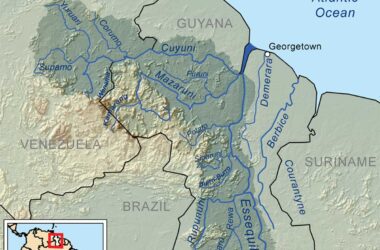Food insecurity is still a worldwide problem affecting over 821 million people, according to United Nations (UN) statistics. The recent figures (also published on this page) note that while food insecurity affects children in Latin America and the Caribbean (one in one hundred), it is ten times better than the situation in Asia (one in ten).
Interestingly, Africa used to be the reference point for global poverty, hunger, starvation and all the population explosion problems, but that situation is changing rapidly, thanks in great part to Africa-China cooperation.
Many in the Caribbean will have joined the continuing debate on whether China has its own long-term plans and goals for Africa. But it would also be well that we spend more time examining how we are handling our own problems of woe and want.
Food Security continues to be a Caribbean problem. We don’t know hunger and famine like they’re shown elsewhere and our fertile lands produce seasonal foods and fruits year-round. But we’re increasingly eating less of what we grow and growing less of what we eat.
With traditional Caribbean export crops like bananas, sugar, rice and coconuts unable to yield the rates of return of past times, new opportunities have arisen for the region to review its past approaches and devise new plans to take advantage of the new opportunities created by the old and new challenges.
We’ve sadly wasted decades waiting for situations to reach adverse proportions before reacting, then doing so thoughtlessly.
Our regional and national import bills continue to rise as we continue to ignore the changing consumption patterns that continue to make imported products look and taste better, even though they are nutritionally inferior.
We continue to ignore increasing warnings about the adverse effects of chemicals used in frozen meats and other foods exported by multinational companies that sidestep health warnings. We therefore see increasing evidence of hormonal substances on young boys (who are) virtually growing breasts and the increasing evidence too of growing obesity.
Thankfully, adverse circumstances have forced us to start looking again at the foods and fruits we have traditionally taken for granted. In the OECS, we’re now more interested in learning more about the mango tree than just its production of a lovely fruit. Likewise, we’re exporting breadfruit, while more is being done to encourage farmers to make better use of local fruits, a sizeable and grossly unfair proportion of which goes to waste every season island-wide. Pineapple production is also on the rise and more people are appreciating local fruits, as seen in the amount of coconut and other fruit vendors dotting roadsides and provision markets everywhere.
But as the history of CARICOM has shown, regional consensus on anything is a very hard thing to achieve, be it a regional Single Market and Economy (CSME), a Caribbean Court of Justice (CCJ) or decriminalization of marijuana.
Food insecurity will continue to be a problem for as long as it exists anywhere and the Caribbean should take no comfort at all in the fact that our figures may read better than others.
It will be better – best of all – if each island, Saint Lucia included, was to carry out its own related research and analyses to determine the true state of food insecurity. On that basis, each can develop the necessary plans at the national level to get going on reducing the local food import bill, while, at the same time, actively working on repatriating local taste patterns, tackling obesity and eventually eliminating that ‘one in a hundred’ child food insecurity statistic that still amounts to too many.


![img: Local produce on display at a World Food Day exhibition in 2013. [PHOTO: Stan Bishop]](https://thevoiceslu.com/wp-content/uploads/2016/09/page-10-pic-fi.jpg)



